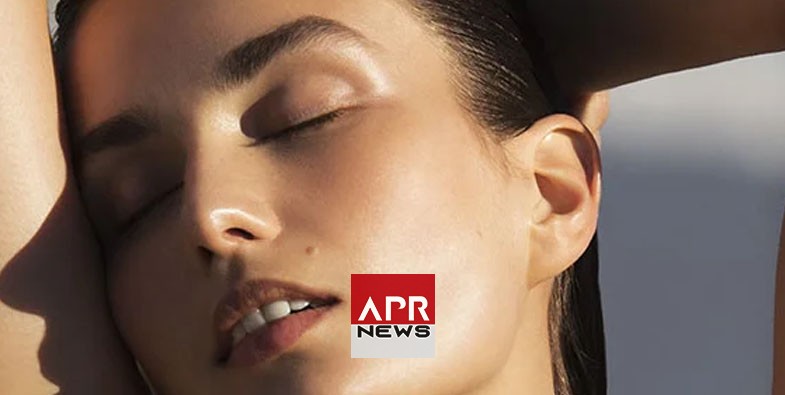You are here
Back to topHow to make sure you’re getting enough vitamin D this fall

How to make sure you’re getting enough vitamin D this fall
You’re likely to hear the term vitamin D thrown around a lot: “I need to top up my vitamin D levels” “Get to the beach to dose up on vitamin D”. Whether you’re in the northern or southern hemisphere, it’s worth keeping your eye on how much or how little of this sunshine vitamin you’re getting. And how for that matter. Because the health benefits go way beyond good bone health and a little feel-good factor.
Like most vitamins and minerals, the human body can’t retain a surplus of vitamin D, even after a particularly sunny summer vacation. According to Jackie McCusker, nutritional therapist and ambassador for supplement brand Happi, almost 50 per cent of the population worldwide have a vitamin D deficiency. This includes countries with a low latitude (ie, those receiving plenty of UVB light, such as Australia and Brazil).
Among the contributing factors are pollution and high SPFs, both of which create a physical block preventing UVB rays (crucial to vitamin D production) from being absorbed. Research conducted at the National Centre for Biotechnology Information found that sunscreens of up to SPF 30 can prevent UVB rays from being absorbed by up to 97.5 per cent.
The most universally known benefit of vitamin D is bone strength – it’s so vital in fact that adults who have an extreme deficiency may end up suffering from osteoporosis – but over the last few years, further studies have shown other health benefits, too. According to McCusker, “Vitamin D has been subject to a huge amount of research for its health benefits in a plethora of conditions including Type 2 diabetes, high blood pressure, autoimmune diseases including MS, upper respiratory tract infections, depression and pregnancy outcomes to name but a few.” In other words, there are few areas of the body it doesn’t reach.
What is vitamin D?
When the body absorbs vitamin D, it is metabolised into a hormone with receptors for the sunshine vitamin (called vitamin D receptors, VDRs) in virtually every cell in the body.
The body can create up to 90 per cent of the vitamin D required to function at an optimum rate through the most natural source, sunlight. Sourcing sufficient vitamin D from natural food sources alone can be a little more complicated. Foods that do have a reasonable amount are oily fish (especially salmon), egg yolks, mushrooms and fortified foods including milk, cheese, orange juice and cereals. A good supplement offers an alternative source.
What does vitamin D do for you?
Vitamin D’s primary function is to promote calcium absorption in the gut and help maintain healthy bones. But studies spearheaded by Dr Michael Holick, an endocrinologist and leading expert in vitamin D, suggest that due to the expansive reach of the VDRs within the body, the benefits extend to far more health issues – being a repair mechanism, the vitamin can target cells that start to waver waiver or become faulty. Studies have shown that a vitamin D-supplemented diet can reduce the risk of cancer, heart disease and stroke. An ongoing five-year study being carried out in Boston, Massachusetts also reports an improved immunity from flus and colds.
How should we get it?
The best source of vitamin D is from the sun, but this doesn’t mean submitting yourself to sunburn through exposure to UVB rays. In a relatively mild climate, for those with type A skin (ie, lighter tones), “Ten minutes a day of exposure to ten per cent of your body’s surface area, such as your arms and face, will give you what you need,” says Dr Bess Dawson-Hughes, director of the Bone Metabolism Lab at the USDA Nutrition Center at Tufts University. Closer to the equator, even less time is required. Darker skin tones, though, have high levels of melanin in the skin which act as a natural sunblock. This means that it is harder for darker skin tones to absorb vitamin D. According to Nina Jablonski, an anthropologist and leading researcher in vitamin D, "Fair-skinned people of European descent are nearly six times more efficient at making vitamin D from UVB rays than those living near the equator."
The Institute of Medicine recommends a daily consumption of 600 IU of vitamin D per day, based on minimal sun exposure. A three-ounce serving of salmon provides about 450 IU and one cup of vitamin D-fortified cow’s milk has about 120 IU. Fortified plant-based milks, orange juice, yogurt, margarine and breakfast cereals are also good options.
Who is not getting it?
People with darker skin are more likely to suffer from a vitamin D deficiency as they naturally absorb less UVB rays. McCusker adds, “Severe deficiency seems to be most common in the Middle East and South East Asia. Deficiency is also prevalent in immigrant populations in the West. The reasons appear to be numerous, including sun exposure, skin pigmentation, skin coverage, age, sunscreen usage, diet and supplement intake.”
High-altitude countries where there is low UVB light exposure, such as those in Scandinavia, are also likely to suffer more. However a standard supplemental vitamin D appears to have reduced the prevalence of vitamin D deficiency in these areas.
A recent study in the Journal of Steroid Biochemistry and Molecular Biology has also found low vitamin D intake among people with high rates of obesity. Dr Dawson-Hughes adds that environmental factors such as clouds, ozone and air pollution can likewise decrease vitamin D absorption.
Vogue







